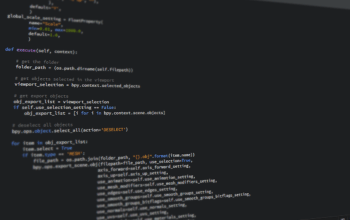Unlocking Regulatory Compliance: The Role of Programming Languages in 2025
Regulatory compliance today isn’t just about paperwork—it’s fueled by smart software engineering and the latest programming languages that help businesses meet ever-evolving standards. As companies juggle complex laws on data privacy, security, and AI governance, coding becomes their secret weapon to build trustworthy systems that auditors and regulators can trust.
Why Compliance Demands the Right Code
Imagine compliance as a traffic cop at a busy intersection—programming languages are the vehicles that navigate this traffic. The wrong code can cause a pile-up of security risks and legal pitfalls, whereas well-structured software drives smooth operations and peace of mind.
1. C++ and MISRA Standards: The Backbone of Safety-Critical Systems
In sectors like avionics and automotive, failure isn’t an option. C++ remains the go-to for embedded systems because of its power and performance. But it’s not just about writing any C++ code – it’s about following rigorous guidelines like the MISRA C++ coding standard.
Real-world story? Developers collaborating with AI tools like OpenAI’s ChatGPT and Microsoft Copilot are now generating C++ code automatically. Yet, as experts caution, code from AI must be carefully checked to comply with MISRA rules to prevent unsafe constructs.
This layered approach blends human expertise with AI’s speed, ensuring software underpinning airplanes or medical devices isn’t just fast but safe and certifiable.
2. Python: The Compliance Automation Champion
Python’s simplicity and rich ecosystem make it a favorite for automating compliance workflows. Companies grappling with the EU’s AI Act or ISO 27001 frameworks use Python scripts to scan logs, monitor configurations, and automate routine audits.
For instance, global firms integrate Python-based tools to continuously check if their AI governance systems meet emerging standards like NIST AI Risk Management Framework, turning what used to be tedious manual checks into real-time alerts.
Think of Python as your compliance assistant, quietly working behind the scenes so regulatory deadlines aren’t missed and risks don’t pile up.
3. Go: Powering Transparent, Scalable Compliance Tools
Go (or Golang) is becoming a favorite for building scalable compliance platforms due to its performance and easy concurrency handling.
Financial companies facing intense scrutiny for fraud and data privacy violations choose Go to build real-time monitoring systems that can handle high volumes of transactions without breaking a sweat.
A leading nearshore software vendor recently adopted Go to create a compliance dashboard that integrates regulatory updates, vendor risk evaluations, and incident tracking — all in one unified interface. This approach not only reduced penalty risks but also sped up internal investigations.
4. JavaScript & Security Scanning: Catching Compliance Issues Early
With most business apps now web-based, JavaScript plays a vital role in security and compliance scanning tools.
Tools like Semgrep, supporting 25+ programming languages, utilize JavaScript to detect vulnerabilities, enforce coding standards, and monitor third-party dependencies during the development lifecycle.
For developers, this is like having a compliance safety net that catches risks before they’re baked into production code, saving companies from costly breaches.
5. The AI-Driven Regulatory Tech Revolution
AI isn’t just transforming coding; it’s reshaping compliance itself. Businesses are embedding AI frameworks like NIST AI RMF and ISO 42001 into governance programs, ensuring AI tools meet ethical and regulatory expectations.
Security officers describe this as moving from reactive checklists to proactive risk management shaped by AI insights.
However, experts emphasize AI governance comes with its own compliance challenges — such as managing bias, data privacy, and regulatory transparency — demanding tailored programming solutions and continuous monitoring.
Practical Takeaways:
- Combine human expertise with AI code generation: AI can speed up coding, but human checks ensure safety and compliance.
- Automate compliance monitoring: Use languages like Python to transform static audits into continuous, adaptive processes.
- Invest in scalable tools: Languages like Go power robust platforms essential for real-time compliance management.
- Embed security scanning early: JavaScript-enabled tools can detect risks at development time, preventing costly fixes later.
- Plan for evolving AI regulations: Stay ahead by integrating frameworks and governance into your codebase.
Final Words
Regulatory compliance in 2025 is a sophisticated dance between legal frameworks and coding languages. Those who master this choreography with the right languages and tools earn trust, avoid penalties, and thrive in a hyper-regulated world.
From embedded safety-critical systems in C++ to Python-powered automation, and Go-built scalable platforms to JavaScript-driven security scanning, the future of compliance is coded—and it’s smarter than ever.
Are you ready to code compliance into your company’s DNA?
References:
- https://arxiv.org/abs/2506.23535
- https://www.compliancehub.wiki/global-information-security-compliance-and-ai-regulations-q2-2025-updates-a-comprehensive-analysis/
- https://www.callutheran.edu/financial-aid/scholarships-grants/outside-scholarships.html
- https://secureframe.com/blog/ai-in-security-compliance
- https://moldstud.com/articles/p-top-compliance-challenges-in-nearshore-development-what-you-need-to-know
- https://www2.internationalinsurance.org/GR-8-10/files?dataid=mIp51-6805&title=hawaii-written-permit-test.pdf
- https://www.aikido.dev/blog/top-10-software-composition-analysis-sca-tools-in-2025
- https://payroll.org/news-resources/news/news-detail/2025/07/02/navigating-compliance-strategy-in-a-complex-global-market-global-payroll-week-2025-survey-results-in-review



